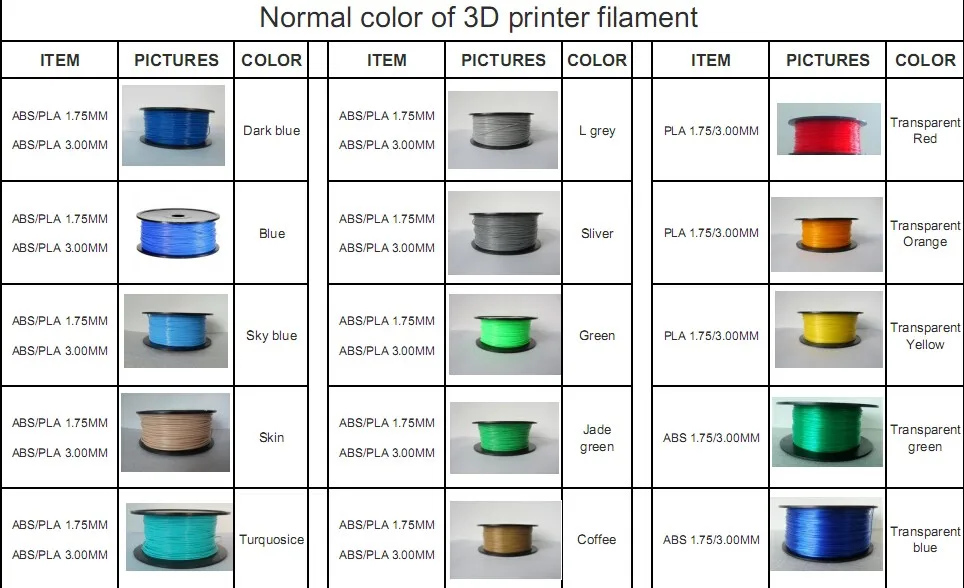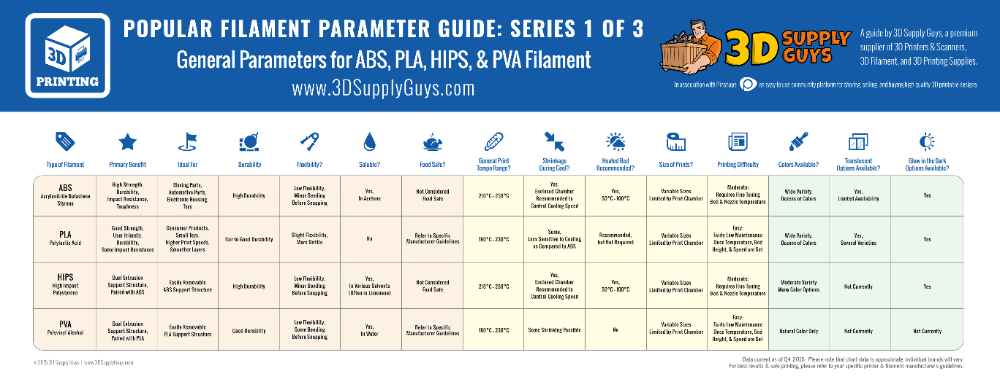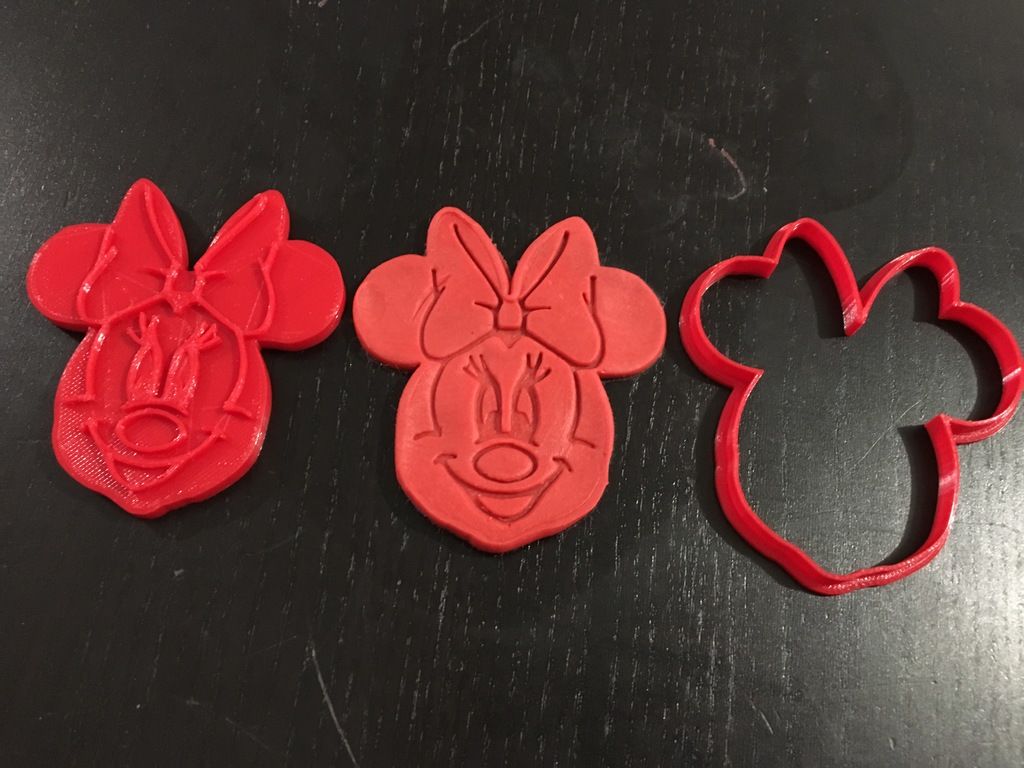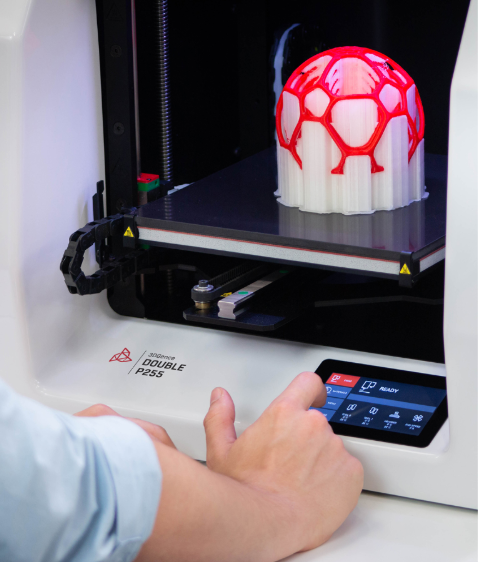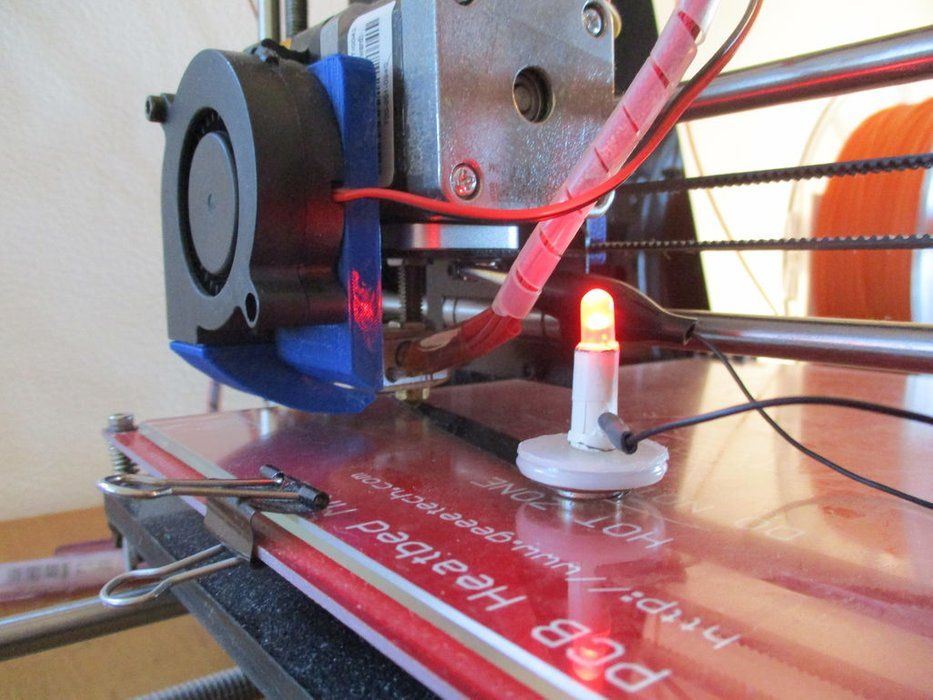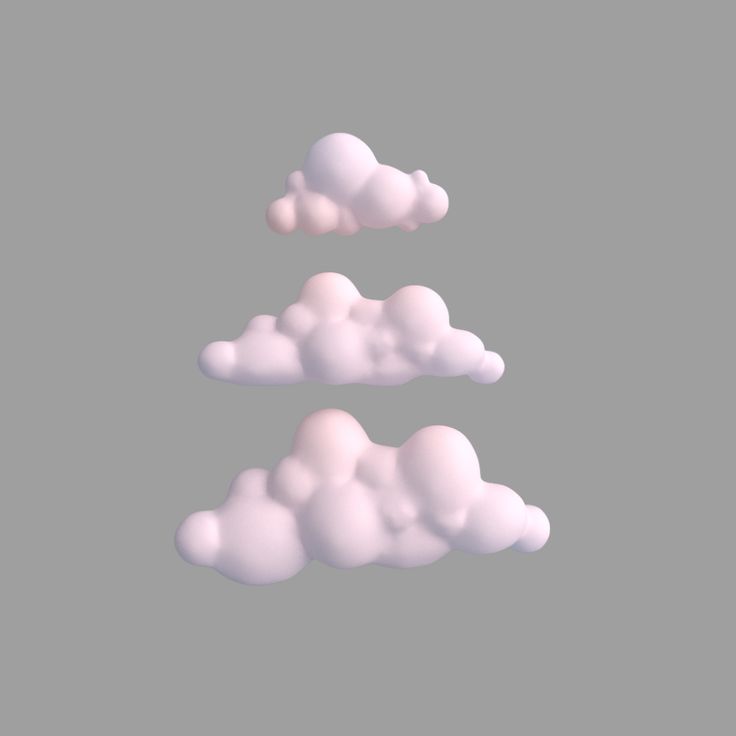3D systems ceramic printer
3D Systems Extends 3D Printing to Ceramic Artisans with Sub $10,000 CeraJet™ 3D Printer
Time-honored ceramic artistry meets 21st century 3D printing
Infuses freedom of creation to unleash kitchenware, tiling and art
Easy to own, simple to use and quick to operate for faster adoption
ROCK HILL, South Carolina –January 7, 2014 – 3D Systems (NYSE:DDD) showcased today its new CeraJet™ 3D printer, extending its 3D printing portfolio to the ancient artisanal craft of pottery and ceramics. Ideal for artists, designers, makers and consumers, CeraJet prints intricate and detailed ceramic objects fast using 3DS’ Color-Jet-Printing (CJP) technology, that are ready for firing and glazing. This class of 3D printers and materials infuses the age-old tradition of ceramics with the ability to make previously unimagined complex shapes. CeraJet will be showcased for the first time at the 2014 International CES in Las Vegas, NV, January 7-10, 2014, at the 3DS booth, LVCC South Hall 31424.
“The CeraJet 3D printer democratizes pottery making in the digital age, and is a prime example of the eureka that exists at the interface between ancient art and new-age technology,” said Buddy Byrum, Vice President Product & Channel Management, 3DS. “CeraJet’s affordability, utility and powerful functionality is sure to revolutionize ceramic artisanship for the benefit of brands, retailers, designers, shops and hobbyists.”
The CeraJet printers are expected to commence commercial shipments during the second half of 2014. To sign up for updates, please visit 3dsystems.com/ces.
3DS invites press to attend a special event hosted by global entertainer and entrepreneur, will.i.am and 3DS CEO, Avi Reichental, at the Las Vegas Convention Center in the South Hall 3, booth 31424, on Wednesday, January 8, 2014, at 4:00 PM PST. Only credentialed press can attend with an RSVP to [email protected].
Those who are not attending CES 2014 can join 3DS’ President and CEO, Avi Reichental, on Tuesday, January 7, 2014, at 4:00 PM EST for a broadcast of 3DS’ extensive showing at CES 2014 by visiting 3dsystems. com/ces and clicking on the broadcast link. For more details on 3DS’ 3DPRINTING 2.0 consumer showcase at CES 2014, please visit 3dsystems.com/ces.
com/ces and clicking on the broadcast link. For more details on 3DS’ 3DPRINTING 2.0 consumer showcase at CES 2014, please visit 3dsystems.com/ces.
Learn more about 3DS’ commitment to manufacturing the future today at www.3dsystems.com and the company’s consumer offerings at www.cubify.com.
###
About 3D Systems Corporation
3D Systems is a leading provider of 3D printing centric design-to-manufacturing solutions including 3D printers, print materials and cloud sourced on-demand custom parts for professionals and consumers alike in materials including plastics, metals, ceramics and edibles. The company also provides integrated 3D scan-based design, freeform modeling and inspection tools. Its products and services replace and complement traditional methods and reduce the time and cost of designing new products by printing real parts directly from digital input. These solutions are used to rapidly design, create, communicate, prototype or produce real parts, empowering customers to manufacture the future.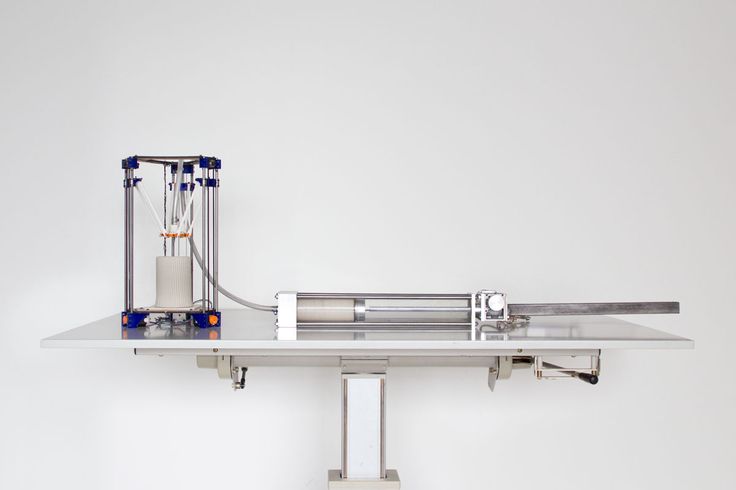
Leadership Through Innovation and Technology
- 3DS invented 3D printing with its Stereolithography (SLA) printer and was the first to commercialize it in 1989.
- 3DS invented Selective Laser Sintering (SLS) printing and was the first to commercialize it in 1992.
- 3DS invented the Color-Jet-Printing (CJP) class of 3D printers and was the first to commercialize 3D powder-based systems in 1994.
- 3DS invented Multi-Jet-Printing (MJP) printers and was the first to commercialize it in 1996.
Today its comprehensive range of 3D printers is the industry’s benchmark for production-grade manufacturing in aerospace, automotive, patient specific medical device and a variety of consumer, electronic and fashion accessories.
More information on the company is available at www.3DSystems.com.
Ceramic 3D printer 2023 - Guide and hardware selection
What is ceramic 3D printing?
Today, ceramic 3D printers are mostly expensive industrial additive manufacturing systems.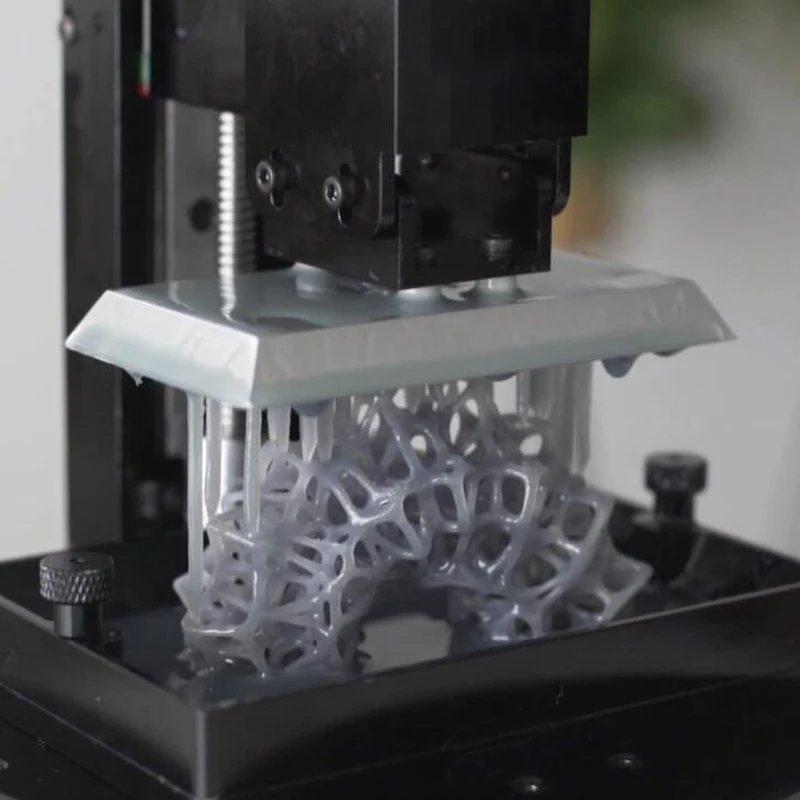 These systems vary in the 3D printing technologies they use to 3D print ceramic material: extrusion, binder jetting, photopolymerization, and powder sintering.
These systems vary in the 3D printing technologies they use to 3D print ceramic material: extrusion, binder jetting, photopolymerization, and powder sintering.
However, 3D printing is only part of a longer manufacturing process. Ceramic 3D printers generate green parts, meaning that they must go through heavy post-processing steps in order to reach their final form. One of these steps, for instance, is firing the ceramic part or prototype in a high-temperature kiln.
Source: KwambioCeramic material is widely used in a number of industries. Of course, some of the first applications that come to mind are pottery or kitchenware – but ceramics are literally everywhere and in many different forms. They can be used for industrial use in automobiles or aerospace, for example, and some ceramics are frequently used in healthcare for medical devices and tools.
This guide includes a comprehensive selection of ceramic additive manufacturing solutions and clay 3D printers for professionals.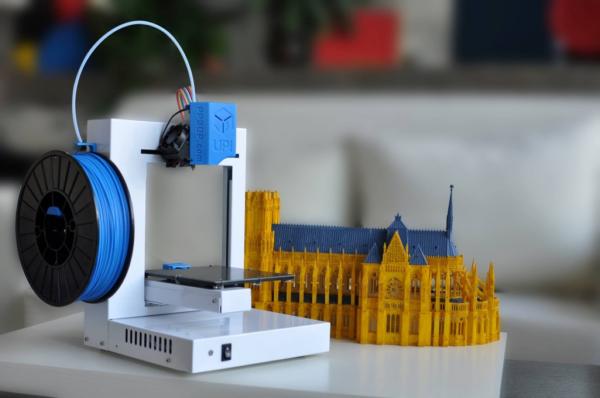
The best ceramic 3D printers in 2023
| Brand | Product | Build size | Country | Price Approximate starting prices based on supplier-provided information and public data. Prices may vary by region, over time and do not include additional products or services (taxes, shipping, accessories, training, installation, …). | |
|---|---|---|---|---|---|
| WASP | DeltaWASP 2040 Clay | ⌀ 200 x 400 mm | Italy | $ 3,5003 000 €2,909 £469,798 ¥ | Quote |
| StoneFlower | 4.0 Multimaterial 3D printer | 500 × 500 × 800 mm19.69 × 19.69 × 31.5 in | Germany | $ 4,0003 699 €3,325 £536,912 ¥ | Quote |
| 3DPOTTER | 3D PotterBot 10 Pro | 415 × 405 × 500 mm16.34 × 15.94 × 19.69 in | – | $ 6,1056 105 €5,075 £819,462 ¥ | Quote |
| VormVrij | LUTUM 5 | 430 × 450 × 500 mm16.93 × 17.72 × 19.69 in | – | $ 9,9009 730 €8,229 £1,328,857 ¥ | Quote |
| Tethon 3D | Bison 1000 | 110 × 60 × 130 mm4. 33 × 2.36 × 5.12 in 33 × 2.36 × 5.12 in | United States | $ 16,90015 828 €14,048 £2,268,453 ¥ | Quote |
| Lynxter | S600D | ⌀ 390 x 600 mm | France | $ 50,00050 000 €41,563 £6,711,400 ¥ | Quote |
| Pollen AM | Pam Series MC | ⌀ 300 x 300 mm | – | $ 140,000135 000 €116,375 £18,791,920 ¥ | Quote |
| Admatec | ADMAFLEX 130 | 96 × 54 × 120 mm3.78 × 2.13 × 4.72 in | – | $ 150,000125 000 €124,688 £20,134,200 ¥ | Quote |
| Rapidia | Metal 3D printer | 200 × 280 × 200 mm7.87 × 11.02 × 7.87 in | – | $ 185,000185 000 €153,781 £24,832,180 ¥ | Quote |
| Lithoz | CeraFab 7500 | 76 × 43 × 170 mm2.99 × 1.69 × 6.69 in | Austria | $ 250,000250 000 €207,813 £33,557,000 ¥ | Quote |
| XJet | Carmel 700C | 500 × 140 × 200 mm19.69 × 5.51 × 7.87 in | – | $ 599,000599 000 €497,919 £80,402,572 ¥ | Quote |
| 3DCeram | C3600 ULTIMATE | 600 × 600 × 300 mm23.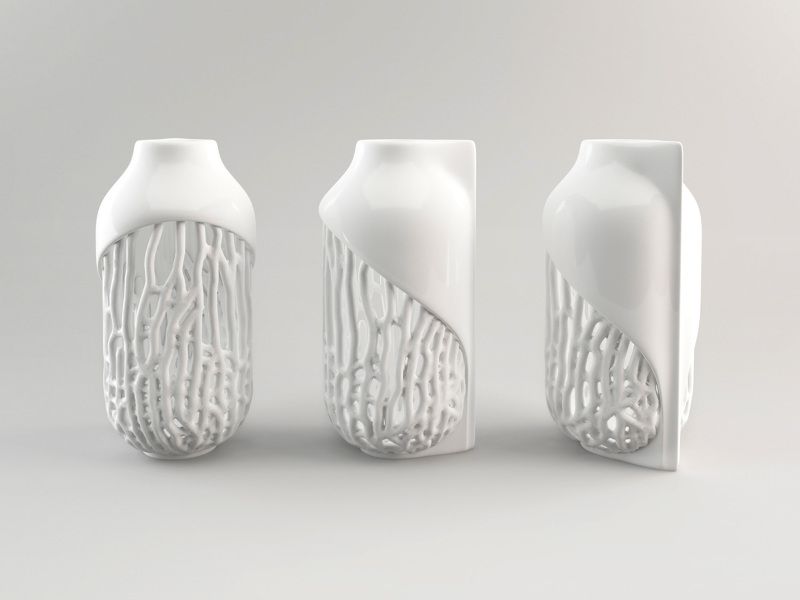 62 × 23.62 × 11.81 in 62 × 23.62 × 11.81 in | – | upon request | Quote |
| Desktop Metal | X160Pro | 500 × 800 × 400 mm19.69 × 31.5 × 15.75 in | United States | upon request | Quote |
Expand to see more specs
The products in the table are ranked by price (low to high).
| Brand | Product | Technology | Build size | Material | Country | Price Approximate starting prices based on supplier-provided information and public data. Prices may vary by region, over time and do not include additional products or services (taxes, shipping, accessories, training, installation, …). | |
|---|---|---|---|---|---|---|---|
| WASP | DeltaWASP 2040 Clay | Extrusion | ⌀ 200 x 400 mm | Ceramic | Italy | $ 3,5003 000 €2,909 £469,798 ¥ | Get a quote |
| StoneFlower | 4.0 Multimaterial 3D printer | Extrusion | 500 × 500 × 800 mm19.69 × 19.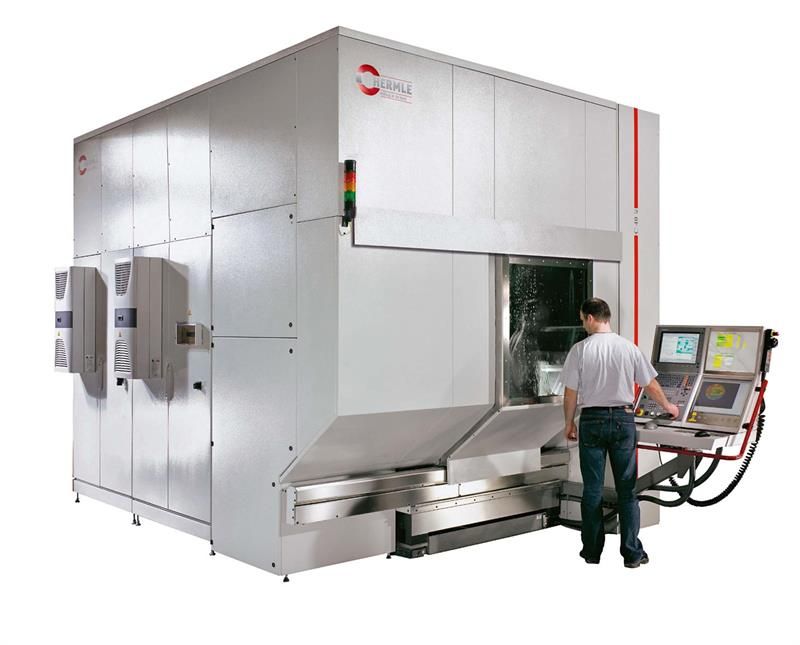 69 × 31.5 in 69 × 31.5 in | Ceramic | Germany | $ 4,0003 699 €3,325 £536,912 ¥ | Get a quote |
| 3DPOTTER | 3D PotterBot 10 Pro | Extrusion | 415 × 405 × 500 mm16.34 × 15.94 × 19.69 in | Ceramic | – | $ 6,1056 105 €5,075 £819,462 ¥ | Get a quote |
| VormVrij | LUTUM 5 | Extrusion | 430 × 450 × 500 mm16.93 × 17.72 × 19.69 in | Ceramic | – | $ 9,9009 730 €8,229 £1,328,857 ¥ | Get a quote |
| Tethon 3D | Bison 1000 | DLP | 110 × 60 × 130 mm4.33 × 2.36 × 5.12 in | Metal, Ceramic | United States | $ 16,90015 828 €14,048 £2,268,453 ¥ | Get a quote |
| Lynxter | S600D | Extrusion | ⌀ 390 x 600 mm | Standard (PLA, ABS…), Engineering (PC, nylon…), High-performance (PEEK, Ultem…), Ceramic, Silicone | France | $ 50,00050 000 €41,563 £6,711,400 ¥ | Get a quote |
| Pollen AM | Pam Series MC | Extrusion | ⌀ 300 x 300 mm | Standard (PLA, ABS…), Engineering (PC, nylon…), Metal, Ceramic | – | $ 140,000135 000 €116,375 £18,791,920 ¥ | Get a quote |
| Admatec | ADMAFLEX 130 | DLP | 96 × 54 × 120 mm3. | Ceramic | – | $ 150,000125 000 €124,688 £20,134,200 ¥ | Get a quote |
| Rapidia | Metal 3D printer | Extrusion | 200 × 280 × 200 mm7.87 × 11.02 × 7.87 in | Metal, Ceramic | – | $ 185,000185 000 €153,781 £24,832,180 ¥ | Get a quote |
| Lithoz | CeraFab 7500 | DLP | 76 × 43 × 170 mm2.99 × 1.69 × 6.69 in | Ceramic | Austria | $ 250,000250 000 €207,813 £33,557,000 ¥ | Get a quote |
| XJet | Carmel 700C | Material Jetting | 500 × 140 × 200 mm19.69 × 5.51 × 7.87 in | Ceramic | – | $ 599,000599 000 €497,919 £80,402,572 ¥ | Get a quote |
| 3DCeram | C3600 ULTIMATE | SLA | 600 × 600 × 300 mm23.62 × 23.62 × 11.81 in | Ceramic | – | upon request | Get a quote |
| Desktop Metal | X160Pro | Binder Jetting | 500 × 800 × 400 mm19. | Metal, Ceramic | United States | upon request | Get a quote |
Industrial ceramic additive manufacturing systems
This ceramic additive manufacturing system uses DLP 3D printing technology.
Compatible materials include aluminum oxide, zirconium oxide, silicon oxide, a combination of aluminum and zirconium, hydroxyapatite and silica based materials for investment casting.
Contact manufacturer Get a quote Add to comparison
Canada-based Rapidia offers an interesting and unique way to 3D print ceramics (and metal). They use a water-based ceramic paste, which eliminates the need for chemical debinding.
The water evaporates during the 3D printing process, so the part only needs to go through the furnace in order to completely solidify and attain its final form.
Contact manufacturer Get a quote Add to comparison
The Lithoz CeraFab 7500 is an industrial-grade 3D printer featuring Lithography-based Ceramic Manufacturing (LCM) technology. This technology uses photosensitive resin to 3D print ceramic parts.
According to Lithoz, this ceramic additive manufacturing system is plug-and-play.
Contact manufacturer Get a quote Add to comparison
This industrial 3D printer from Israel breaks ceramic and metal material down into nanoparticles, in a patented process called NanoParticle Jetting. These particles are then mixed to XJet’s proprietary liquid, which is then jetted layer by layer through thousands of nozzles.
XJet’s technology produces parts of with an outstanding level of detail and accuracy.
Contact manufacturer Get a quote Add to comparison
The C3600 ULTIMATE by french manufacturer 3DCeram is able to 3D print different engineering ceramics, including: zirconia, alumina, hydroxyapatite/TCP, Si3N4, cordierite, zirconsilica, and silica.
These materials are in the form of proprietary, photosensitive pastes that the ceramic 3D printer photopolymerizes layer after layer.
Contact manufacturer Get a quote Add to comparison
The X160Pro is an industrial metal 3D printer produced by Desktop Metal. It is based on the X1 160PRO from German manufacturer ExOne, which Desktop Metal acquired in 2021.
Desktop Metal is a 3D printer manufacturer based in United States. The Desktop Metal X160Pro uses Binder Jetting 3D printing technology. This 3D printer offers a build volume of 500 x 800 x 400 mm.
Contact manufacturer Get a quote Add to comparison
Professional desktop ceramic 3D printers
German-based StoneFlower manufactures print heads dedicated for suspensions and pastes, clay printing add-ons for desktop 3D printers, and the user-friendly Multimaterial 3D printer.
The StoneFlower 3D printer comes with a touchscreen, WiFi/Ethernet, precise mechanical feed system, and optional dual extruder.
Custom build sizes are available upon request as well as closed casings.
Contact manufacturer Get a quote Add to comparison
WASP is an Italian manufacturer specializing in delta 3D printers and clay 3D printing materials (and even concrete 3D printing). Their Delta WASP 2040 Clay is a compact and affordable solution for professionals.
A clay printing kit is also available for users that already own a 3D printer.
Contact manufacturer Get a quote Add to comparison
This ceramic 3D printer uses a stationary paste extruder, meaning that clay comes directly out of the nozzle without the need for air compressors or hoses.
The syringe-like extruder is able to contain a maximum of 2000 mL of material.
Contact manufacturer Get a quote Add to comparison
The VormVrij LUTUM 5 is one of the many clay 3D printers manufactured by Dutch brand VormVrij. This model is equipped with a large intuitive touchscreen, Wi-Fi connectivity, and high-quality components.
Its 316 grade Stainless Steel extruder uses moisture-free 6Bar compressed air to push clay through its nozzle.
Contact manufacturer Get a quote Add to comparison
The Bison 1000 is a desktop ceramic resin 3D printer from the US. Tethon 3D, the manufacturer, has been developing professional resins for a few years already and this is their first commercialized 3D printer.
Proprietary resins include materials such as porcelain, earthenware, alumina, and others.
Contact manufacturer Get a quote Add to comparison
The S600D by French manufacturer Lynxter is an all-in-one 3D printer that is packed with features. Its main characteristic is its ability to 3D print high-performance materials such as PEEK or PEI, with a high-temperature extruder, print bed, and chamber.
Its special paste-material print head enables it to 3D print ceramic materials as well.
Contact manufacturer Get a quote Add to comparison
Pollen AM is a French manufacturer that has been producing pellet 3D printers since 2013. Their Pam Series MC is a delta-style 3D printer (cylindrical build volume) that can print both ceramics and metals, and even thermoplastics.
It extrudes injection-molding pellets instead of ceramic 3D printing filament, which is a more affordable material format than powder or filament, for example.
Contact manufacturer Get a quote Add to comparison
Special mentions
Nanoe Zetamix
Nanoe produces several ceramic-infused filaments that can be printed by almost any desktop FFF 3D printer. These filaments are part of Nanoe’s Zetamix line and materials include Zirconia, black Zirconia, and Alumina, and even a metal-based filament (Stainless Steel).
After parts are printed, debinded, and sintered, they are 99% dense.
Voxeljet
Voxeljet specializes in industrial AM systems for sand molds, though the majority of their printers are capable of printing ceramic materials.
The most compact Voxeljet system is the VX200, which already boasts very large dimensions: 1,700 x 900 x 1,500 mm. Pricing starts at around $150,000.
Kwambio
For those looking for Kwambio, the company is in a delicate financial position. Kwambio is an additive manufacturing company from Ukraine with headquarters in New York. Their online ceramic 3D printing service enables users to choose from glossy, matte, opaque, or unglazed finishes.
The Kwambio Ceramo Zero ceramic 3D printer never officially made it to market.
Ceramic 3D printing process
There are several 3D printing technologies available to 3D print ceramic material:
- Paste extrusion: a paste extruder deposits layers of ceramic onto a build plate.
- Powder sintering: the ceramic is in a powdered form and is sintered layer by layer.
- Binder jetting: the 3D printer deposits layers of binding agent upon layers of powder.
- Photopolymerization: a light source solidifies a mix of resin and ceramic powder layer after layer.
Most industrial ceramic 3D printers use either binder jetting or powder sintering technologies.
As mentioned earlier, ceramic 3D printers create green parts. These green parts must go through different steps to reach their final form:
- Firing: in some cases, this step must be repeated more than once.
- Glazing (optional): professionals may choose to cover the object with glaze to give it a special color or finish, such as matte or glossy.
Applications for ceramic 3D printing
In general, ceramic materials provide a number of properties:
- high strength and dimensional stability
- low density
- chemical stability
- high electrical insulating capacity
- high resistance to abrasion and corrosion
Therefore, ceramic 3D printing suits a wide variety of applications. These applications include engineering in industries such as aerospace, automotive, chemical, electrical, environmental, medical, and more.
Of course, artists can also benefit from ceramic 3D printing (clay printing) for pottery and sculptures.
Here, we are highlighting two industries where ceramic 3D printing seems to be gaining prominence:
Ceramic art, pottery, and sculptures
For hundreds of years, we have been using clay to create beautiful and/or functional objects. Dutch designer Olivier van Herpt, for example, uses his ceramic 3D printer to create impressive vases. Ceramic material is also used in the luxury industry for watches and jewelry.
Biomedical
There are a number of applications with 3D printing ceramics when it comes to the medical industry. For instance, patients can benefit from custom implants made of calcium phosphates, a material that is very close to human bone composition. Furthermore, it’s possible to control the implant’s porosity.
This means 3D printed bone substitutes will have a low chance of rejection from a body’s immune system. 3DCeram illustrates this in their medical case study.
Professional ceramic 3D printing services
Industrial ceramic additive manufacturing systems are very expensive, and it may not always make sense for a business to invest in one. Some ceramic printer manufacturers give professionals the opportunity to use their machines through ceramic 3D printing services.
Users just have to send their 3D model to the service, choose the material, and wait until they receive the final product. Ceramic 3D printer manufacturers such as 3DCeram, Admatec, DDM Systems, Kwambio, Lithoz, Prodways, and Voxeljet provide this type of service.
A few 3D printing service bureaus offer ceramic printing options, too:
- Shapeways
- iMaterialise
- OsseoMatrix
- WZR CerPrint
Ceramic printers
Compare products (0)
Sort by:
)By Model (A - Z)By Model (Z - A)
Display:
15255075100
Displaying 1 to 1 of 1 (total 1 page)
premises and additional equipment which is an integral part of the production process.
Room
1. Printer room: In order for your printer to work stably and not surprise you, it is very important to maintain stable humidity in the room, ideally the relative humidity in the room should be 20% - 25%. It is at this humidity that the most accurate color reproduction and optimal toner consumption are achieved. Since the relative humidity of the air is constantly changing and reaches 70% - 75% in summer, we recommend our customers to install the printer in a small room with an air dryer and hygrometer installed in it, in order to more easily maintain an optimal microclimate.
2. Firing room and decolouration: decolouration (covering the decal with lacquer) and firing should be carried out in a separate room equipped with a good exhaust, because these processes release a large amount of substances with a strong odor and toxicity. Also, this room should be equipped with racks for drying decals and finished products. For the greatest effect, we recommend installing hoods both above the decolour table and above the firing oven. It is also necessary to purchase a special respirator for the employee who will deal with the decaling of printed images.
3. Imaging equipment: For imaging you will need. A system unit with the following characteristics - a processor not lower than Pentium 4 or AMD Athlon 64, RAM from 2 GB, video card with memory from 1 GB. Monitor with support for 1280x800 resolution and IPS matrix for better color reproduction. Scanner you can choose any color scanner, but we would recommend purchasing the Epson perfection series, because these models have established themselves as high-quality and reliable equipment.
4. Software for the production of photoceramics You will be quite satisfied with one program for image processing, this is Photo shop CS5 or higher.
Preparation time.
1. The production of souvenirs and ritual products is a very profitable business, which always has an excellent demand for its products. But a very important factor in the payback of your new business is the seasonality of demand for a particular product that you are going to produce. For example, there is a demand for ritual products only at a time when the weather allows relatives of the deceased to visit cemeteries. While the hype for the production of souvenirs begins with the New Year, and ends in the summer, during the holiday season, unless, of course, you are engaged in the production of souvenirs directly in the resort area.
2. Therefore, when purchasing equipment, it is necessary to calculate everything so that you and your equipment are ready for production at least a month before the start of the season for the products you are going to produce. So, if you are going to start manufacturing ritual products, ideally you need to purchase equipment in February or March. This is due to the fact that in addition to purchasing equipment, in order to receive orders, you need to find customers, and this is the production of samples, price lists, catalogs and, of course, advertising. You will spend about a month before the start of the season on all these events.
Why buy equipment from us?
- Our company has been successfully manufacturing equipment for printing photoceramics for more than 7 years.
- In the production of our equipment, we use only original consumables from the German company MZ TONER Technologies.
- We ourselves operate the equipment we sell.
- We have our own production, where you can get training and see how everything is arranged and organized, you don't have to invent anything, you just need to repeat and make a profit.
- Before purchasing equipment, you can always come to us and try to work on the equipment yourself.
*The price of the equipment may be slightly changed. As a rule, this is due to the dollar exchange rate.
Alcom | History of 3D printers
May 13, 2018
Since the beginning of the new millennium, the concept of "3D" has firmly entered our daily lives. First of all, we associate it with cinematography, photography or animation. But now there is hardly a person who has not heard about such a novelty as 3D printing at least once in his life.
What is it and what new opportunities in creativity, science, technology and everyday life bring us 3D printing technologies, we will try to figure it out in the article below.
But first, a little history. Although there has been a lot of talk about 3D printing in the last few years, in fact, this technology has been around for a long time. In 1984, Charles Hull developed a 3D printing technology for reproducing objects using digital data, and two years later named and patented the stereolithography technique.
At the same time, this company developed and created the first industrial 3D printer. Subsequently, the baton was taken over by 3D Systems, which developed the SLA-250 printer model for 3D printing at home in 1988.
In the same year, fused deposition modeling was invented by Scott Grump. After several years of relative calm, in 1991 Helisys develops and markets a technology for the production of multilayer objects, and a year later, at 1992, DTM introduces the first selective laser soldering system.
Then, in 1993, Solidscape was founded, which began mass production of inkjet-based printers that are capable of producing small parts with an ideal surface, and at a relatively low cost.
At the same time, the University of Massachusetts patents a 3D printing technology similar to conventional 2D inkjet technology. But, perhaps, the peak of development and popularity of 3D printing still fell on the new, 21st century.
In 2005, the first 3D printer capable of printing in color appeared, this is the brainchild of Z Corp called the Spectrum Z510, and literally two years later the first printer appeared that could reproduce 50% of its own components.
Currently, the scope and scope of 3D printing is constantly growing. Everything turned out to be subject to these technologies - from blood vessels to coral reefs and furniture. However, we will talk about the areas of application of these technologies a little later.
So what is 3D printing?
In short, this is the construction of a real object according to a 3D model created on a computer. Then the digital three-dimensional model is saved in the STL file format, after which the 3D printer, to which the file is output for printing, forms a real product.
The printing process itself is a series of repetitive cycles associated with the creation of three-dimensional models, applying a layer of consumables to the desktop (elevator) of the printer, moving the desktop down to the level of the finished layer and removing waste from the surface of the table.
The cycles follow one after another continuously: the next layer of material is applied on the first layer, the elevator is lowered again and so on until the finished product is on the working table.
How does a 3D printer work?
The application of 3D printing is a serious alternative to traditional methods of prototyping and small-scale production. A three-dimensional or 3D printer, unlike a conventional one that prints two-dimensional drawings, photographs, etc. on paper, makes it possible to output three-dimensional information, that is, to create three-dimensional physical objects.
At the moment, this class of equipment can work with photopolymer resins, various types of plastic filament, ceramic powder and metal clay.
What is a 3d printer?
The principle of operation of a 3d printer is based on the principle of gradual (layered) creation of a solid model, which, as it were, is “grown” from a certain material, which will be discussed a little later. The advantages of 3D printing over the usual, manual methods of building models are high speed, simplicity and relatively low cost.
For example, to create a 3D model or any part manually, it can take quite a long time - from several days to months. After all, this includes not only the manufacturing process itself, but also preliminary work - drawings and diagrams of the future product, which still do not give a complete vision of the final result.
As a result, development costs increase significantly, the period from product development to its mass production increases.
3D technologies, on the other hand, allow you to completely eliminate manual labor and the need to make drawings and calculations on paper - after all, the program allows you to see the model from all angles already on the screen, and eliminate the identified shortcomings not in the process of creation, as is the case with manual production, but directly during development and create a model in a few hours.
This virtually eliminates the possibility of manual errors.
What is a 3d printer: video
There are various 3D printing technologies. The difference between them lies in the way the product layers are applied. Let's consider the main ones.
The most common are SLS (selective laser plexus), HPM (molten material overlay) and SLA (stereolithiography).
Stereolithography or SLA is the most widely used technology due to the high speed of building objects.
SLA Technology
The technology works like this: a laser beam is directed onto a photopolymer, after which the material hardens.
The photopolymer is a translucent material that deforms when exposed to atmospheric moisture.
Once cured, it can be easily glued, machined and painted. The working table (elevator) is in a container with a photopolymer. After the laser beam passes through the polymer and the layer hardens, the working surface of the table moves down.
SLS Technology
Sintering powder reagents under the action of a laser beam - it is also SLS - the only 3D printing technology that is used in the manufacture of molds for both metal and plastic casting.
Plastic models have excellent mechanical properties, thanks to which they can be used for the manufacture of fully functional products. SLS technology uses materials that are similar in properties to the brands of the final product: ceramics, powdered plastic, metal.
The 3D printer device looks like this: powder substances are applied to the surface of the elevator and sintered under the action of a laser beam into a solid layer that corresponds to the parameters of the model and determines its shape.
DLP Technology
DLP technology is new to the 3D printing market. Stereolithographic printers are positioned today as the main alternative to FDM equipment. This type of printer uses digital light processing technology. Many people wonder what the 3d printer of this sample prints with?
Instead of a plastic filament and a heating head, photopolymer resins and a DLP projector are used to create three-dimensional figures.
Below you can see how the 3d printer works video:
Having heard about a DLP 3d printer for the first time, what it is is a completely reasonable question. Despite the intricate name, the device is almost no different from other desktop printers. By the way, its developers, represented by
QSQM Technology Corporation, have already launched the first samples of high-tech equipment into a series. It looks like this:
EBM Technology
It should be noted that SLS/DMLS technologies are far from the only ones in the field of metal printing. Currently, electron beam melting is widely used to create metal three-dimensional objects. Laboratory studies have shown that the use of metal wire for layer-by-layer deposition in the manufacture of high-precision parts is ineffective, so engineers have developed a special material - metal clay.
The metal clay used as ink during electron beam melting is made from a mixture of organic glue, metal shavings and a certain amount of water. In order to turn the ink into a solid object, it must be heated to a temperature at which the glue and water will burn out, and the chips will fuse together into a monolith.
EBM 3d printer: how
worksIt is noteworthy that this principle is also used when working with SLS printers. But unlike them, EBM machines generate directed electron pulses instead of a laser beam to melt metal clay. I must say that this method provides high print quality and excellent drawing of small details.
Today, only industrial printers using EBM technology are sold. Here is what one of them looks like:
The video below demonstrates the capabilities of a 3d printer adapted for electron beam melting:
HPM technology (FDM) HPM
Allows you to create not only models, but also final parts from standard, structural and high-performance thermoplastics. It is the only technology that uses production grade thermoplastics to provide unparalleled mechanical, thermal and chemical strength to parts.
HPM Printing stands out for its cleanliness, ease of use and suitability for office use. Thermoplastic parts are resistant to high temperatures, mechanical stress, various chemicals, wet or dry environments.
Soluble auxiliary materials allow the creation of complex multi-level shapes, cavities and holes that would be problematic to obtain with conventional methods. HPM 3D printers create parts layer by layer by heating the material to a semi-liquid state and extruding it according to computer-generated paths.
HPM printing uses two different materials - one (main) will consist of the finished part, and an auxiliary, which is used for support. The filaments of both materials are fed from the 3D printer bays into the print head, which moves based on changes in the X and Y coordinates and fuses the material, creating the current layer, until the base moves down and the next layer begins.
When the 3D printer has finished creating the part, it remains to separate the auxiliary material mechanically, or dissolve it with detergent, after which the product is ready for use.
Interestingly, not only automatic desktop HPM printers are popular these days, but also manual printing devices. Moreover, it would be correct to call them not printing devices, but pens for drawing three-dimensional objects.
Pens are made in the same way as printers using fusing technology. The plastic thread is fed into the pen, where it melts to the desired consistency and is immediately squeezed out through a miniature nozzle! With proper skill, these original decorative figures are obtained:
And of course, just like technologies, printers themselves differ from each other. If you have a printer that works according to SLA, then it will be impossible to apply SLS technology on it, i.e., each printer was created only for a certain printing technology.
3D printing applications
3D printing has opened up great opportunities for experimentation in areas such as architecture, construction, medicine, education, fashion design, small-scale production, jewelry, and even in the food industry.
In architecture, for example, 3D printing allows you to create three-dimensional models of buildings, or even entire neighborhoods with all the infrastructure - squares, parks, roads and street lighting.
Thanks to the cheap gypsum composite used, the cost of finished models is low. And more than 390 thousand CMYK shades make it possible to embody any, even the most daring, imagination of an architect in color.
3d printer: construction application
In construction, there is every reason to believe that in the near future the process of erecting buildings will be much faster and easier. Californian engineers have created a 3D printing system for large objects. It works on the principle of a construction crane, erecting walls from layers of concrete.
This printer can build a two-story house in just 20 hours.
After that, the workers will only have to carry out finishing work. 3D House 3D printers are gradually gaining a strong position in small-scale production.
These technologies are mainly used for the production of exclusive products, such as art, role-playing game characters, prototype models of future products or any structural parts.
In medicine, thanks to 3D printing technologies, doctors have been able to recreate copies of the human skeleton, which allows them to more accurately practice techniques that increase the guarantee of successful operations.
3D printers are increasingly being used in the field of prosthetics in dentistry, as these technologies allow much faster production of prostheses than with traditional manufacturing.


